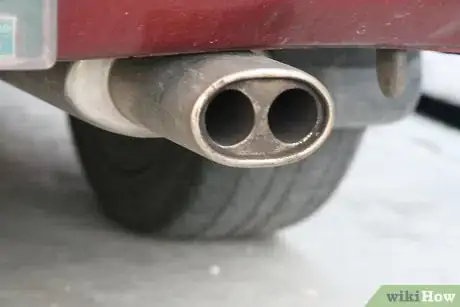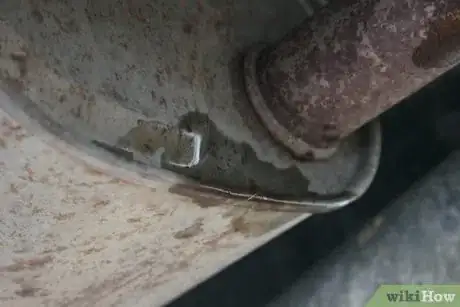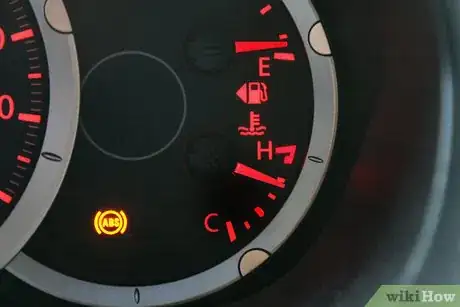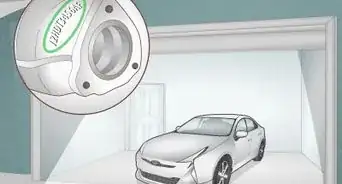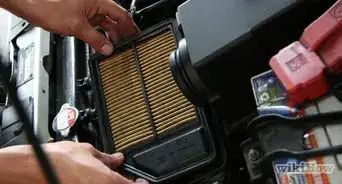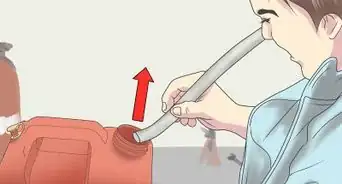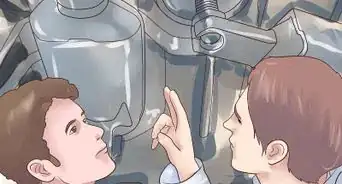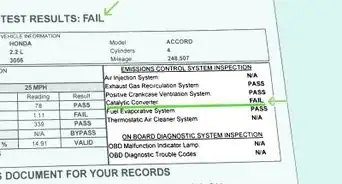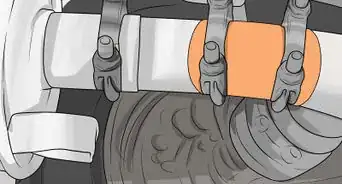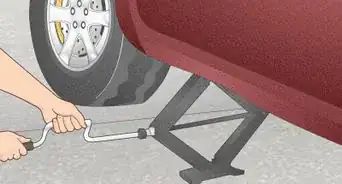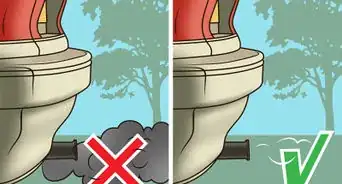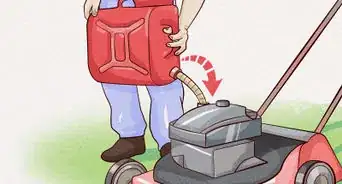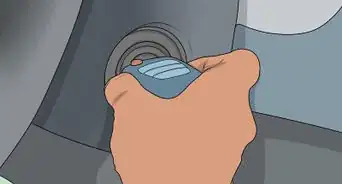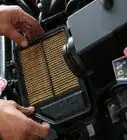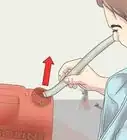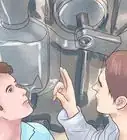wikiHow is a “wiki,” similar to Wikipedia, which means that many of our articles are co-written by multiple authors. To create this article, volunteer authors worked to edit and improve it over time.
There are 7 references cited in this article, which can be found at the bottom of the page.
This article has been viewed 261,032 times.
Learn more...
A muffler is an important component of an engine's exhaust system. The muffler is located in the middle or back of the exhaust, and its purpose is to reduce the noise produced from the exhaust process. It also directs the exhaust gases safely out the vehicle's system. Although manufacturers for regular checkups or replacement do not schedule the muffler, you should learn how to know when a muffler is broken because it does wear out or break. A defective muffler can cause significant noise pollution and pose a hazard for any of the vehicle's occupants.
Steps
-
1Know the risks of a defective muffler.
- If the muffler has a hole, it can cause dangerous gases such as carbon monoxide to leak into the cabin of a vehicle. This colorless, odorless gas is a product of the combustion process. Mild exposure to carbon monoxide can cause headaches, dizziness, and nausea. Prolonged carbon monoxide exposure can lead to unconsciousness and death.[1]
- Many homeowners' associations, cities, restaurants, and apartment complexes have laws against loud noises from defective mufflers. If you have a broken muffler, you may face fines or refusal of service until you get the muffler fixed.
- A damaged muffler can cause a car trip to be noisy and uncomfortable.
-
2Listen to the sound of your vehicle. A broken muffler may cause the car to have a louder sound than before.[2] Thumping or clunking may indicate that something is broken in the exhaust system.
- Some mufflers contain baffles to reduce the noise of the exhaust system. These may become broken or loose and cause rattling in a muffler.
Advertisement -
3Use a car jack to raise the car so you can examine the muffler.[3] Inspect the muffler for any holes and rust. Visible rust on the outside may indicate an even worse problem on the inside of the muffler.
- Minor surface rust may be normal if it does not penetrate the metal.
-
4Look for water dripping from the muffler. Although condensation in a muffler does occur and some manufacturers include a small drain hole in the muffler therefore, water dripping from several places may indicate that holes have formed from rust.
-
5Check the temperature of the engine after the car has run a while. If the car overheats, it may mean there are problems with your car's exhaust system. If the muffler is damaged or has come apart, this could cause a partial blockage and cause the engine to overheat or lose power.
-
6Take your car to a mechanic if you suspect your car has a defective muffler.
Community Q&A
-
QuestionWhat if there is a clear water leak from a muffler?
 Community AnswerWater leaking from a muffler is normal when you have not driven far enough to cause the muffler to be so hot that it turns the water vapor in the exhaust to steam as it exits. The water vapor from the burned gasoline condenses in the exhaust pipe and muffler when the pipes and muffler are cold. This water from condensation is what causes rust in the muffler, and the rust causes the muffler to develop holes.
Community AnswerWater leaking from a muffler is normal when you have not driven far enough to cause the muffler to be so hot that it turns the water vapor in the exhaust to steam as it exits. The water vapor from the burned gasoline condenses in the exhaust pipe and muffler when the pipes and muffler are cold. This water from condensation is what causes rust in the muffler, and the rust causes the muffler to develop holes. -
QuestionIs there any way to get it to work?
 Community AnswerIf the pipe that leads to or out of a muffler is broken, it's possible to be repaired. If the muffler itself is broken, it cannot be fixed and should be replaced.
Community AnswerIf the pipe that leads to or out of a muffler is broken, it's possible to be repaired. If the muffler itself is broken, it cannot be fixed and should be replaced. -
QuestionHow can I tape an exhaust pipe back together?
 Community AnswerTape is not your best option. If an exhaust pipe is broken, depending on the location of the break, you may be able to buy a small repair kit that will temporarily mend the broken pipe until it can be professionally repaired. The best route is to have it repaired or replaced by a professional.
Community AnswerTape is not your best option. If an exhaust pipe is broken, depending on the location of the break, you may be able to buy a small repair kit that will temporarily mend the broken pipe until it can be professionally repaired. The best route is to have it repaired or replaced by a professional.
Warnings
- The exhaust system may be hot during the inspection and cause burns. Use caution and allow the car to cool down before touching anything.⧼thumbs_response⧽
- Carbon monoxide gas is a colorless, odorless gas that can be deadly.⧼thumbs_response⧽
Things You'll Need
- Car jack
- Jack stands
References
- ↑ https://ephtracking.cdc.gov/showCoRisk.action
- ↑ https://www.autoblog.com/2016/12/13/how-to-troubleshoot-a-car-exhaust-or-engine-noise/
- ↑ https://www.dummies.com/home-garden/car-repair/how-to-safely-jack-up-your-vehicle/
- https://www.cars.com/articles/how-to-tell-if-a-car-has-an-exhaust-leak-1420663031704/
- https://www.youtube.com/watch?v=3HGqb6qCyTs
- http://www.autos.com/auto-repair/8-tools-needed-for-proper-muffler-repair
- http://www.cdc.gov/co/faqs.htm
